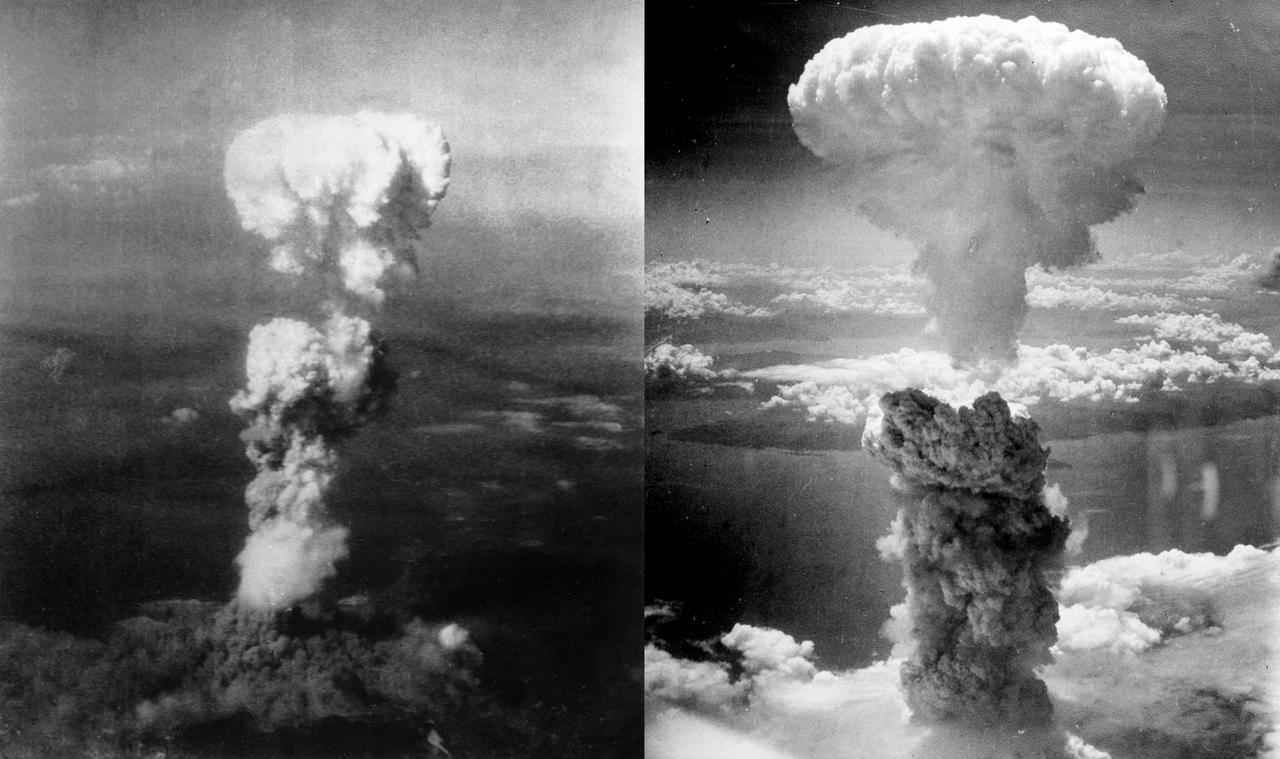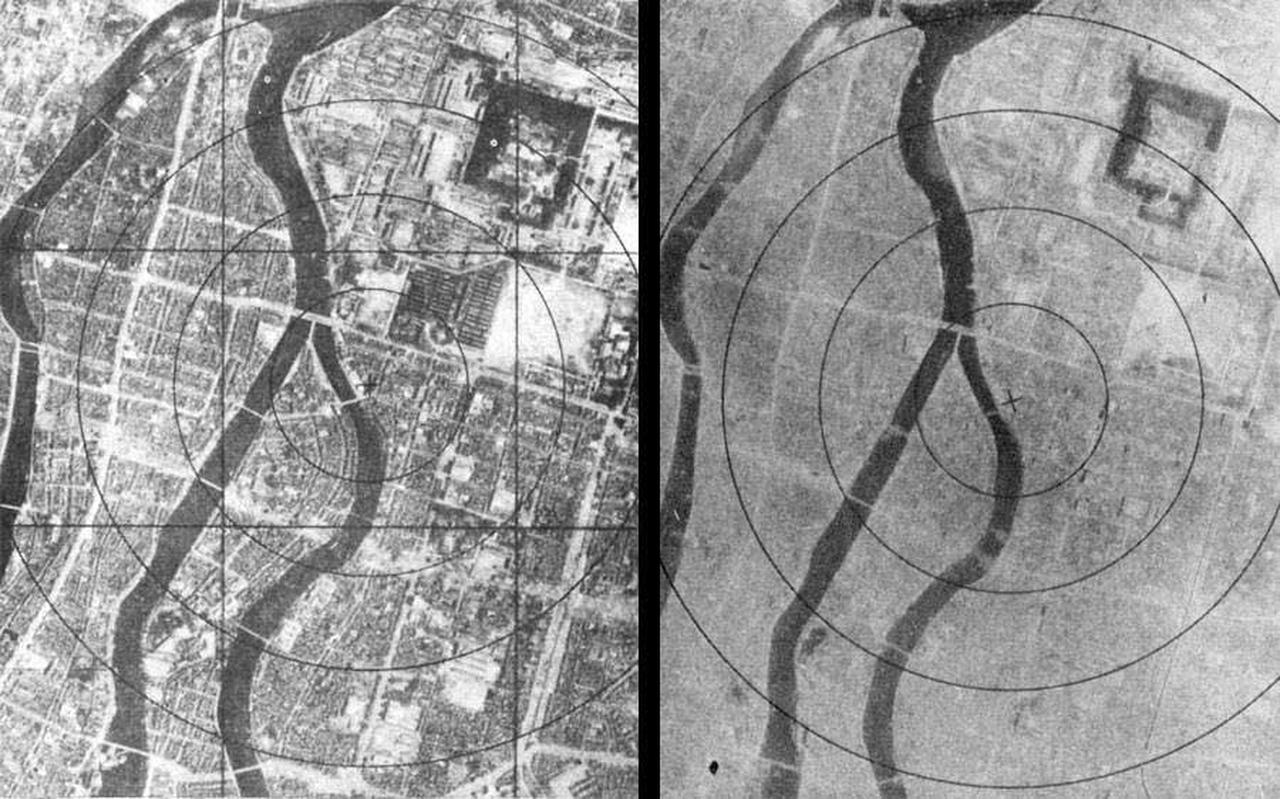What to do if a nuclear bomb hits: A realistic survival plan
Left: Smoke rises over Hiroshima after the first atomic bomb on August 6, 1945, with six planes from the 509th Composite Group involved in the mission. Right: Atomic bombing of Nagasaki on August 9, 1945, photographed by Charles Levy. (Photos via Wikimedia)
June 24, 2025 04:49 PM GMT+03:00
With tensions escalating between Iran and Israel, Russia and Ukraine, and even India and Pakistan, the possibility and fears of a new nuclear war is being widely debated.
It has actually been looming in the minds since the armed conflict in 1945 where the United States struck the Japanese cities Hiroshima and Nagasaki. Most people think they'd never survive a nuclear attack. The truth? If you're not at ground zero, you can survive, but only if you know what to do and when to do it. Your actions in the first 48 hours after a nuclear blast will determine if you live or die.
In this timeline, we aim to show you the necessary skills and equipment to minimize as much as possible the effects of the explosion.
The first 15 minutes also known as ‘the flash’
- The moment you witness a sudden, strong flash of light, immediately drop to the ground and lie flat.
- Close your eyes and cover them with your hand or arm to protect your vision from the blast.
- Cover any exposed skin as much as you can afford to without opening your eyes.
- You should keep in mind that you will have approximately 10 minutes before the shockwave arrives.
- Take shelter in the strongest and closest building preferably made of concrete or brick as they offer better protection than wood and glass.
- When you get inside make sure to stay away from windows and position yourself in the centre of the building.
15 minutes to 1 hour also known as "The shockwave and initial fallout"
- Remain low as the shockwave passes to avoid getting shaken by the wind.
- Radioactive fallout which is contaminated particles of dust and debris that start falling from the sky after the explosion will begin to descend within 20 minutes of the explosion.
- Being indoors is non-negotiable however if caught outside, cover your nose and mouth, and seek shelter immediately.
- As soon as you get into a closed area that shelters you from the fallout, remove your outer clothing to minimize radioactive contamination and shower with water only.
These aerial photographs show ground zero before and after the atomic bombing. (Photos via U.S. Army)
First 24 hours
- This is known as the most dangerous period for radiation exposure.
- You must stay indoors throughout the whole period at all costs.
- Once settled in the shelter make sure to seal the room: close all windows, doors, vents, fireplaces, and any system that brings in outside air.
- Make sure to stay tuned by monitoring official updates announced by the government via radio, phone, or any other devices if available.
- Consume only stored food and bottled water. Do not eat or drink anything that comes from the outside environment.
After 48 hours
- If you must move or find a more sustainable shelter or get resources like food or clothes, you may move preferably after the first 48 hours, when radiation levels begin to decrease significantly.
- Limit your outdoor movements to no more than 30 minutes.
- Continue to monitor news or instructions from authorities whenever possible.
You may be wondering: What immediate actions can I take right now to protect myself?
In the first place, it is important to be well informed about the nature and use of nuclear bombs as weapons and to follow up with the global geopolitical landscape.
Being aware of these matters is crucial for your preparedness.
Next, you should try building a survival kit by assembling the following essentials:
- Food and water: Store at least a two-week supply of canned food and water (depending on the number of people and their need of calories).
- Radiation protection gear: Include masks, potassium iodide tablets that help block radioactive iodine from being absorbed by your thyroid gland, and protective clothing (avoid polyester, the colour white and patterned clothes).
- First aid kit: Ensure it contains burn creams, bandages, and basic medications.
- Communication tools: A hand-crank radio and batteries can keep you informed in case of electricity blackout or destruction of internet towers.
- Lighting sources: Pack torches, candles, and matches.
Other than that, you should create a safe space by constructing or identifying a shelter like your home’s basement which is where you should automatically go in such a case.
Finally, it's important to manage your resources wisely and remain calm. In situations like these, maintaining your mental health is just as important as physical safety. If possible, offer support to others as having a sense of community and compassion can make a vital difference.
June 24, 2025 05:02 PM GMT+03:00

